
After F-35C Stealth Fighter Jet Crash, The U.S. Most Advanced Jets Seem To Be “Rusting” On Board Aircraft Carrier
About a week since the U.S. Navy embarrassingly lost an F-35C Lighting II Joint Strike Fighter in the South China Sea, all the efforts to recover the jet is still ongoing. The most advanced jet, which crashed into the deck of the aircraft carrier USS Carl Vinson on January 24 and then fell into the water, has injured the pilot and at least six sailors in the crash.
While the pilot managed to eject before the jet fell into the sea, the pilot and two other sailors had to be evacuated to the Philippines for medical care. The crash happened as Vinson (CVN-70) and USS Abraham Lincoln (CVN-72) were operating in the South China Sea. The U.S. 7th Fleet claimed that the “mishap” occurred during take-off from the USS Carl Vinson.
The US$100 million F-35C plane is now lying on the ocean bed, which could be in waters up to 30,000 feet deep depending on the exact location of the jet. It’s still unclear if the entire fighter jet, which is loaded with top classified technology, could be recovered because the aircraft was said to have been broken into debris as it crashed into the sea at high speed.
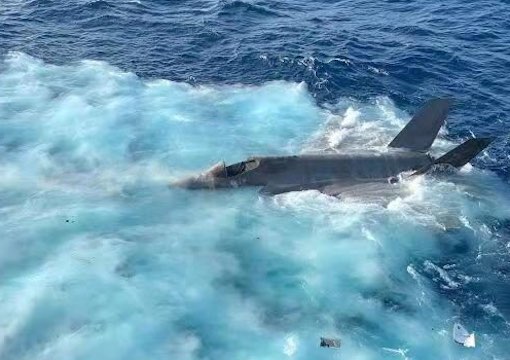
Photos circulating on social media, however, were showing the F-35C landed in the water right side up and largely intact – before sinking. Even though the U.S. Navy has one salvage ship, USNS Salvor (ARS-52), it would take at least 10 days to reach the crash site. However, the black box battery would be dead by then, making it harder to locate the aircraft.
The Japanese Coast Guard has issued a navigation warning that a salvage operation was going on in a northern portion of the South China Sea – roughly 185 miles (298 kilometres) west of the Philippines and 350 miles (563 kilometres) east of Woody Island in the Paracels, a group of man-made islands on which China has built an airbase and other military infrastructure.
It means the Chinese military could be already on its way to get to the jet first, even though Beijing has denied it was interested in the F-35C. Because the China has claimed almost 95% of South China Sea and possessed massive assets nearby, the United States obviously fear that their “flying computer”, which was linked to other assets, could fall into China’s hands.
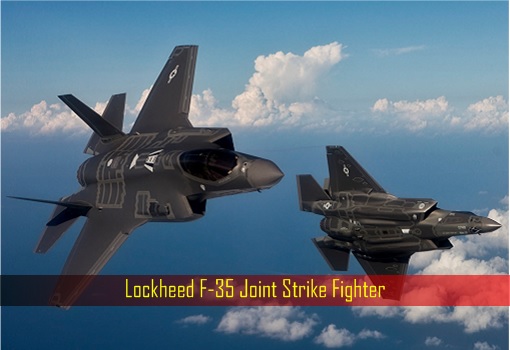
The alternative option is to torpedo the sunken treasure in order to prevent the Chinese military from seeing the F-35C onboard hardware and software. China may have gotten bits and pieces of the aircraft’s technology. But getting access to the actual unit of the U.S. most advanced fighter jet will not only allow China to study and potentially replicate it, but also to find its vulnerabilities.
Salvaging enemy sunken ships and aircraft to access its technology, or to find its vulnerabilities, is a normal practice. When the British submarine HMS Poseidon sank off China’s east coast in 1931, the wreck of one of the British Royal navy’s state-of-the-art ships was secretly retrieved by China in 1972. At that time, China’s nuclear submarine programme was just getting started.
Two years later (1974), in one of the most expensive, complex and secretive intelligence operations during the Cold War, the U.S. Central Intelligence Agency (CIA) spent a whopping US$800 million (US$4 billion today) to salvage the sunken Soviet submarine K-129 from the Pacific Ocean floor near Hawaii. The U.S. wanted to access the Russian nuclear missile and cryptology equipment.
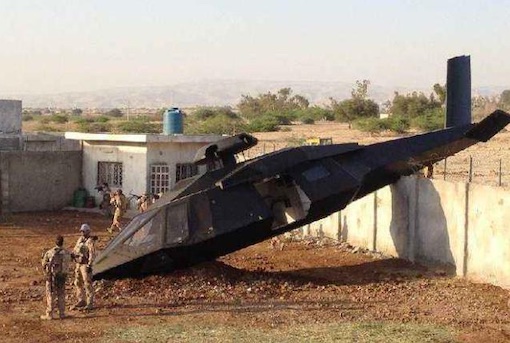
In 2011, despite requests from the CIA, Pakistan went against the U.S. and granted China access to American “stealth” helicopter that crashed during an highly secretive operation to kill terrorist Osama bin Laden. Apparently, during the raid, one of two heavily modified Blackhawk helicopters malfunctioned and crashed. China was said to have taken samples of the “special skin” of the aircraft that evaded Pakistani radar.
This is the not first time that the U.S. had lost its newest and most sophisticated F-35. The F-35 so-called mishap was the fifth major aviation mishap to the Vinson’s carrier strike group in the past two months. Last year (Nov 2021), the U.K., Italy and the U.S. scrambled to salvage a British F-35B that crashed into the Mediterranean following a take-off from the carrier HMS Queen Elizabeth.
Similarly, the Japanese lost an F-35A in the Pacific Ocean in April 2019 after the Lockheed Martin-made fighter jet crashed into the sea, travelling at an estimated speed of 690 mph (1,110 kph). The crash, which killed 41-year-old Major Akinori Hosomi, was blamed on “spatial disorientation” by Japan. The 5th-generation fighter was destroyed and parts and fragments scattered across the sea bottom.
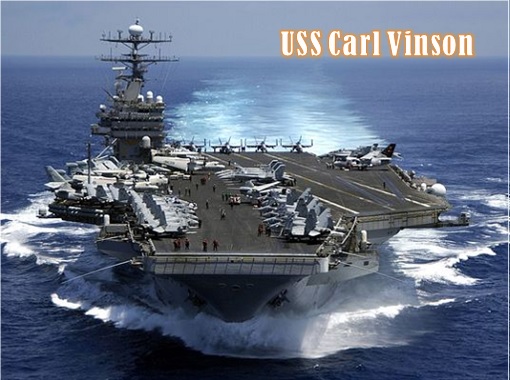
However, the crash aboard Vinson last week is the first-ever crash involving the F-35C stealth fighter plane. The F-35 family includes three variants – the A-variant (F-35A) was designed for the U.S. Air Force and the B-variant (F-35B) entered service with the U.S. Marines Corps in 2015, while the C-variant (F-35C) was specifically for the U.S. Navy.
The Air Force’s F-35A is capable of taking off and landing on standard runways, while the Marine Corps’ F-35B is a short-take-off vertical landing variant that can operate off the Navy’s amphibious assault ships. These two variants are operated by US allies and partners, including Japan, South Korea, the United Kingdom, Australia, Italy, Norway, the Netherlands and Israel.
The F-35C, the newest of the F-35 family, only entered the U.S. Navy service in February 2019. Lockheed Martin claims that the US Navy variant – F-35C – has more robust landing gear for carrier-based operations, folding wings to fit on a packed flight deck and a slightly longer operating range. In total, there has been at least 8 reported accidents or crashes involving the F-35 jets.
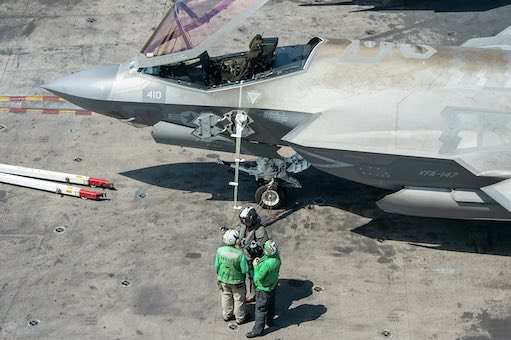
Now, even before the dust settles, photos from the USS Carl Vinson and USS Abraham Lincoln have raised eyebrows. Eagle eyes have apparently noticed something interesting on the two Nimitz-class supercarriers, which carry F-35C fighter jets. The photos, first appeared on the Pentagon’s Defence Visual Information Distribution Service, showed the jets covered in reddish-brown streaks as if they “were rusting”.
Unlike their Air Force’s F-35A, the Navy’s variant’s rust could be due to wear and tear after its highly sensitive radar-absorbent skins are constantly exposed to the harsh saltwater environment. While rust only affects metals like iron or steel, the radar-absorbent materials (RAM) – a closely guarded secret – are believed to consist of iron as one of the ingredients of the coatings in stealth technology.
According to Smithsonian Magazine, the stealth coatings are basically “iron ball” paint containing molecules of carbonyl iron ferrite. F-35’s skin sections are joined in sawtooth or “W” patterns rather than straight lines, to redirect a radar contact. As in the case of previous generations of stealth coatings, the coating could degrade over time. This might cause the brown stains of rust due to oxidation effect.
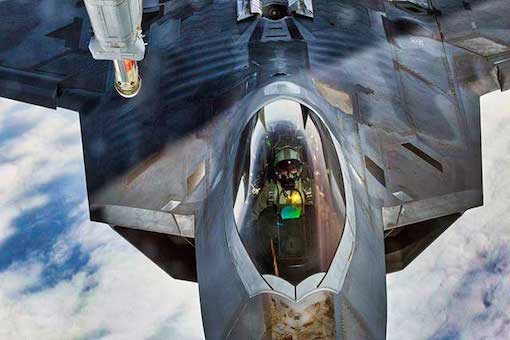
Sure, the Lockheed Martin F-35 has the most advanced stealth coating. But high humidity and heat could accelerate degradation to the F-35C skins after around 6 months at sea. Maintaining radar-absorbent coating on the surface of the F-35 is a tedious and time-consuming work that is a challenge to be carried out on an aircraft carrier itself.
"the China has claimed almost 95% of South China Sea"
ReplyDeleteThis is an misinformation!
China only claimed landmasses that r traditionally named/used/occupied by her fishermen in the long history of navigation in SCS.
Many of those landmasses thus fit into the claims of EEZ & 12 miles territorial waters right.
Suffice to say that many r confused about the distinctions used in these two terms as defined under UNCLOS.
SCS has an estimated coverage of 3.5 million km² & is the largest sea body after the five oceans. The SCS Islands consist of over 250 islands, atolls, cays, shoals, reefs and seamounts in the South China Sea. The estimated total natural landmasses area is approximately 6 km².
Under the Nine Dash Line, China renamed 149 of the islands as her territorial rights. This is about 60% of all the known landmasses within the SCS. Thus the actual landmasses officially claimed by China is about 3.6 km² excluding the artificially built-up landmasses! The estimated total NEW area claimed by China, including the artificial built-ups within the occupied landmasses is about 13 km²!
Thus contrary to many fake news, China only claims, within her historical rights, a very small percentage of the overall landmasses within the SCS!
Many articles have fraudulently claimed that China is claiming almost all the area under the Nine Dash Line. This is both a misinformation & disinformation by the writers.
Under UNCLOS, international navigation within the EEZ is allowed. But exploration of natural resources is not allowed by unauthorized outside parties. There r strict restrictions about navigation within the 12 mile territorial water applied under the international maritime laws.
The reasons WHY the Yank is not the signatory of the UNCLOS bcoz he wants free navigation roamings within all waters he sees fit!
Trying to justify the People's Republic of China's claim to the South China Sea's islands and resources is like trying to pass a Xinjiang camel through the eye of a needle....wakakaka...
DeleteNo! No no!
DeleteIt's harder to wake up a sleep pretender on whatsoever ground.
The wet dream it has is too enticing about its idolised demoNcratized Yankee.
USA did not ratify UNCLOS but adheres to the treaty rules.
ReplyDeleteThe People's Republic of China ratified UNCLOS, but when it came to an actual case - the case brought by the Phillipines, China refused to recognise the Court's ruling.
What the fuck is the point of China ratification , just a signature on paper when they refuse to follow the rules ?
Mfer do show proof(s) that yr idol USA adheres to the UNCLOS rules!
DeleteUSofA signatories r just for show, not that if the Yankee do signed.
Ask the EU! Dingoland too!
Don't just fart with simple one-liner statement. The last time that non-chinese played this trick, he was swarmed with foul gaseous of his own making!
Oooop… perhaps u r so used to yr staled surrounding that any additional fart wouldn't make an inch of difference!
There was not a single hint of disgruntlement or dispute from the ever-busy-body Anglosphere over the 9-dash-line until the apparent discovery of huge oil deposits in SCS, all in the context of China's rise at the same time.
ReplyDeleteThe Philippines's case was on the behest of the US ( in fact, the US foot the whole bill for this malicious exercise). The ruling PCA is NOT an UN agency and in any case, it also did not rule on ownership - its finding are not valid when it is done without the participation from both sides. Bear in mind Taiwan has even a larger claim to the SCS than the Mainland...11-dash-line, wa ka ka ka
To give perspective, The Chagos archipelago dispute was ACTUALLY ruled by the UN earlier last year in favour of Mauritius but do you think the UK will give them back ?
China's use of the SCS for defensive purposes has much more justification than UK's Indian Ocean strategic base.
PS : Vietnam is the country currently occupying most the disputed SCS islands. On this, the Anglosphere is like the 3 monkeys all gone deaf, blind and dumb.